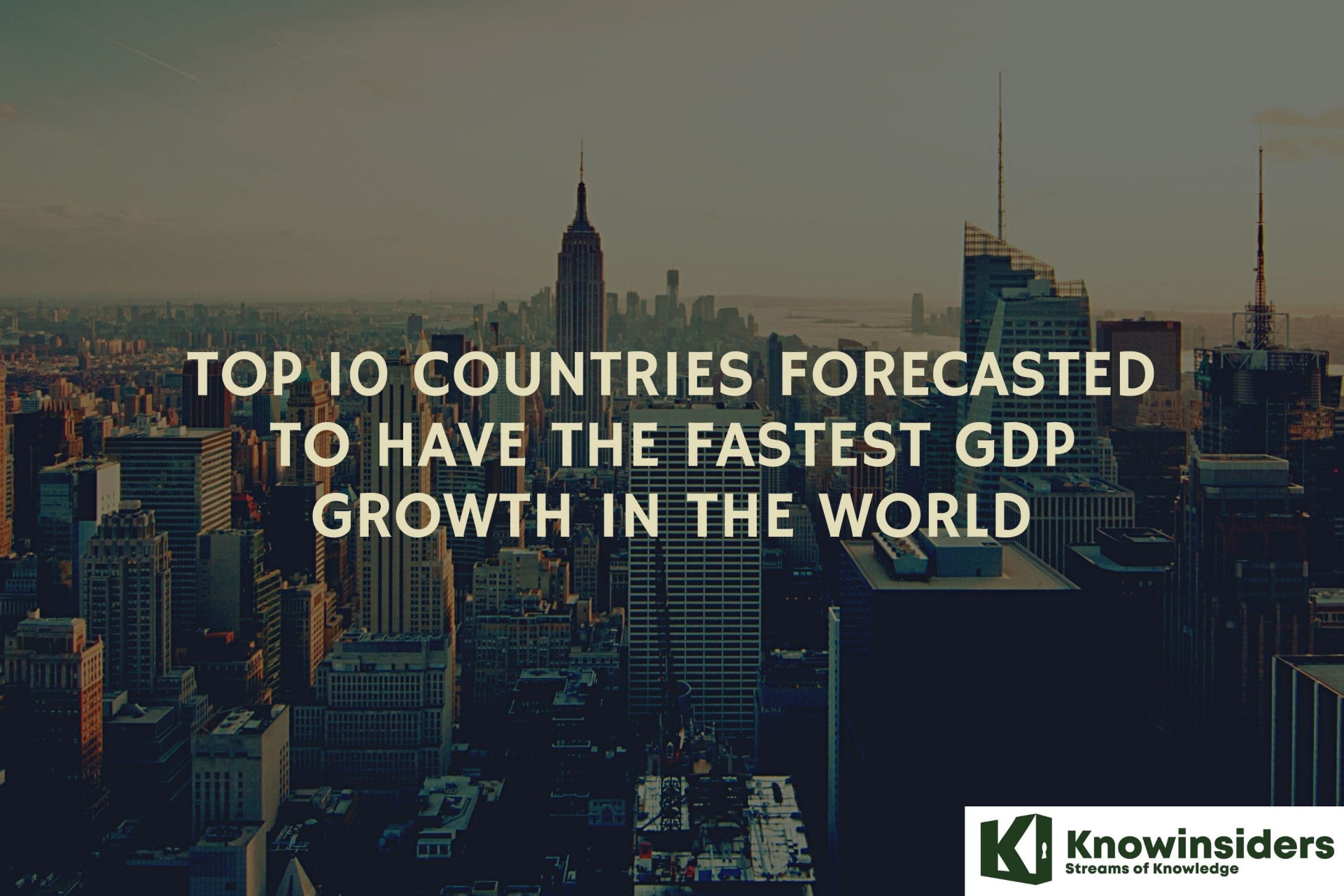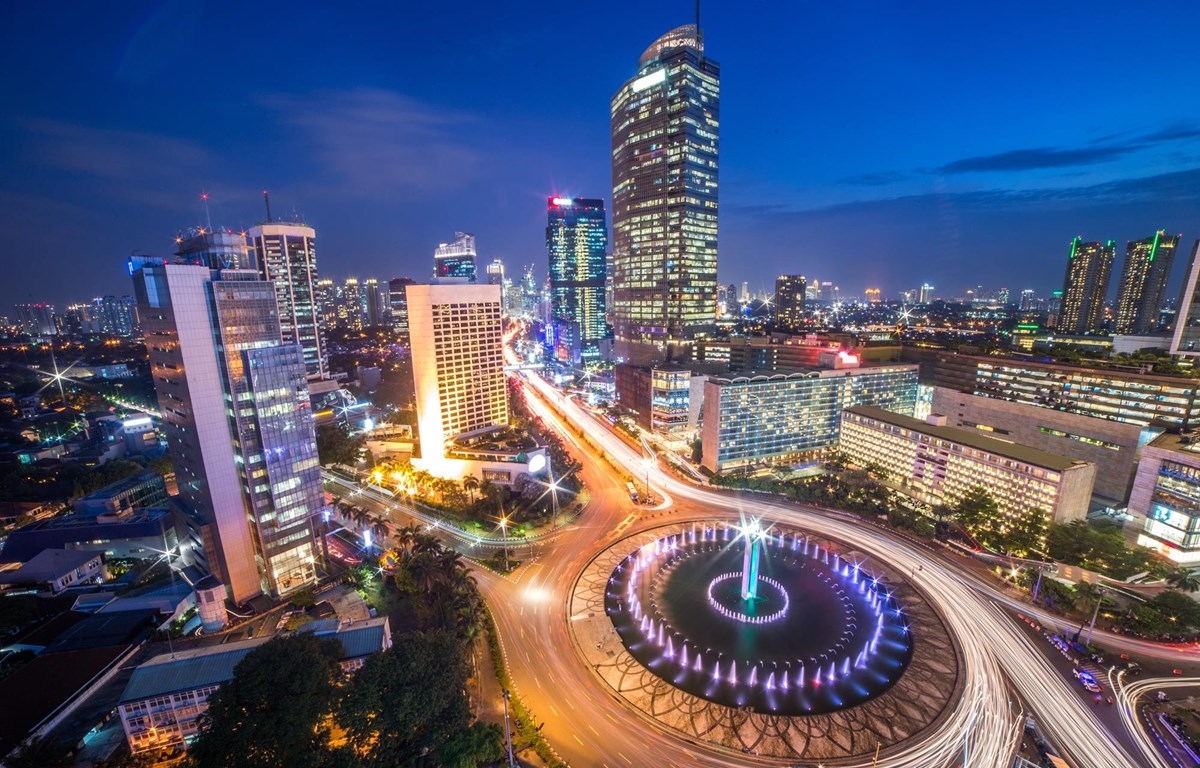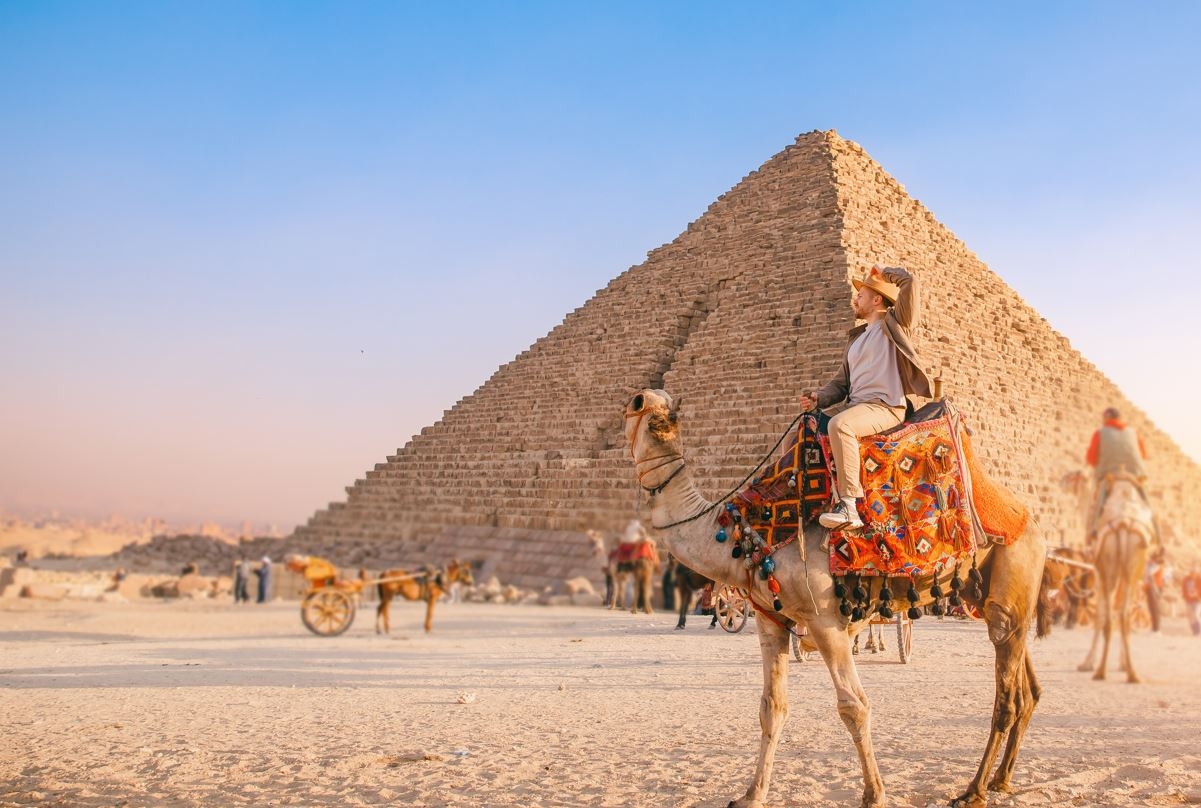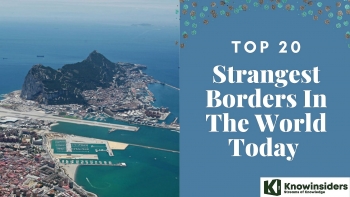Top 10 Countries Forecasted To Have The Fastest GDP Growth in Next 8 Years
 |
| Top 10 Countries Forecasted To Have The Fastest GDP Growth in The World in The Next 8 Years |
| Summary |
Gross domestic product (GDP) is an estimate of the total value of finished goods and services produced within a country’s borders during a specified period, usually a year. GDP is popularly used to estimate the size of a country’s economy. GDP is most commonly measured by using the expenditure method, which calculates GDP by adding up spending on new consumer goods, new investment spending, government spending, and the value of net exports (exports minus imports).
The report on Economic Growth Forecast to 2030 of the Center for International Development of Harvard University (USA) has just announced the top 10 countries with the fastest GDP growth in the world in the next 8 years.
According to the report, several Asian economies will have the fastest GDP growth in the world over the next nearly decade, led by Cambodia, Indonesia, Vietnam, Malaysia and India.
Among the countries in Southeast Asia, only Cambodia, Indonesia, Vietnam and Malaysia are among the top 10 countries that are forecast to have the fastest average GDP growth in the next 8 years in the world.
Specifically, Cambodia, with a GDP growth rate of 6.14%/year, ranked second; Indonesia has a GDP growth rate of 5.64%/year, ranked 4th; Vietnam has a GDP growth rate of 5.56%/year, ranking 6th, and Malaysia has a growth rate of 5.31%, ranking 9th in the world.
Top 10 Countries Forecasted To Have The Fastest GDP Growth in The World in The Next 8 Years
1. Uganda
 |
| Photo: freedomhouse |
GDP Growth Rate in Uganda is expected to be 1.30 percent by the end of this quarter, according to Trading Economics' global macro models and analysts' expectations. In the long-term, the Uganda GDP Growth Rate is projected to trend around 1.60 percent in 2022 and 1.30 percent in 2023, according to our econometric models.
The services sector is the most important sector of Uganda's economy and accounts for around 51 percent of total GDP. The biggest segments within services are trade & repairs (13 percent); education (8 percent); real estate (5 percent); and finance and insurance (4 percent). Agriculture, forestry & fishing account for 27 percent and the industrial sector represents around 22 percent of the GDP, mostly due to manufacturing (9 percent) and construction (8 percent).
2. Cambodia
Economic activity has been spurred in recent years by surging garment and construction sectors, although the economy was hard-hit by the pandemic in 2020 and likely contracted notably, amid income losses and lower tourism revenue.
The economy should return to a strong growth trajectory this year as the impact of the pandemic fades and FDI remains strong, although high unemployment, tense relations with the EU—the key market for garment exports—and elevated twin deficits pose downside risks.
3. Tanzania
The Gross Domestic Product (GDP) in Tanzania was worth 67.78 billion US dollars in 2021, according to official data from the World Bank. The GDP value of Tanzania represents 0.02 percent of the world economy.
GDP growth is projected at 5.0% and 5.6% in 2022 and 2023, due to improved performance in tourism, the reopening of trade corridors, and accelerated rollout of vaccines. Inflation is projected to increase to 4.4% in 2022 and to 3.8% in 2023 due to higher energy prices because of the Russia–Ukraine conflict. The fiscal deficit is expected to narrow to 2.7% and 2.8% of GDP in the same period due to better revenue performance and will be financed by domestic and external borrowing. The current account deficit is expected to widen to 4.0% of GDP in 2022 due to higher oil prices before narrowing to 2.6% in 2023 as merchandise exports and tourism receipts stabilize, and will be financed mainly by external borrowing. The major downside risks relate to new COVID-19 variants and associated disruptions to economic activity, but should be mitigated by increased public awareness and uptake of vaccines.
4. Indonesia
 |
| Photo: vietnamplus |
Indonesia is the world’s 16th largest economy, with a GDP of $1.06 trillion as of 2020.
Indonesia’s economy is the largest economy in Southeast Asia and is based largely on commodity export industries. Major exports include coal and petroleum products, in addition to agricultural commodities suitable for industrial use, such as rubber and palm oil. Indonesia's budget deficit for 2023 is targeted at 2.81% to 2.95% of GDP. However, regional inequality, lack of infrastructure, and governmental corruption remain problems for Indonesia’s rising economy.
5. Mozambique
The Gross Domestic Product (GDP) in Mozambique was worth 16.10 billion US dollars in 2021, according to official data from the World Bank. The GDP value of Mozambique represents less than 0.01 percent of the world economy.
GDP in Mozambique is expected to reach 17.00 USD Billion by the end of 2022, according to Trading Economics global macro models and analysts expectations. In the long-term, the Mozambique GDP is projected to trend around 17.00 USD Billion in 2023, according to our econometric models.
The economy is expected to expand at a stronger clip this year, as the fading impact of the global pandemic should support domestic demand. With the Coral Sul offshore platform expected to come online in October, increased LNG production should further buoy activity. Clashes with jihadists in the gas-rich Cobo Delgado province cloud the outlook. FocusEconomics panelists see GDP growing 4.2% in 2022, which is unchanged from last month’s forecast, and 5.5% in 2023.
6. Viet Nam
Vietnam has been a development success story. Economic reforms since the launch of Đổi Mới in 1986, coupled with beneficial global trends, have helped propel Vietnam from being one of the world’s poorest nations to a middle-income economy in one generation. Between 2002 and 2021, GDP per capita increased 3.6 times, reaching almost US$3,700. Poverty rates (US$1.90/day) declined sharply from over 32 percent in 2011 to below 2 percent.
Thanks to its solid foundations, the economy has proven resilient through different crises, the latest being COVID-19. Vietnam was one of only a few countries to post GDP growth in 2020 when the pandemic hit. GDP growth slowed down to 2.58 percent in 2021 due to the emergence of the Delta variant but is expected to rebound to 5.5 percent in 2022.
7. Egypt
 |
| Photo: paperwriter |
Egypt, with vast swaths of desert in its east and west and the rich Nile River Valley at its heart, is site to one of the world’s earliest and greatest civilizations. Its location at the northeast corner of Africa bordering the Mediterranean Sea has made it a cultural and trading center. But its location has also made it a prize to claim by empires and put it at the center of social and religious movements.
Egyptians are overwhelmingly the largest ethnic group in the country, and most religious Egyptians follow the Sunni branch of Islam. Sufism also is practiced and Copts are the country’s largest Christian denomination. Arab and Islamic traditions shape the country’s culture. The country is a literary center for the Arab world and art forms such as music combine Arab, African, Mediterranean and Western elements.
8. Madagascar
The COVID–19 pandemic put a brake on Madagascar’s four years of economic growth. After real GDP growth of 4.4% in 2019, the country went into a recession in 2020, with real GDP declining 4%. Manufacturing, mining, and services were hardest hit because of containment measures, while agriculture performed well. The crisis also put pressure on the financial sector, prompting the central bank to inject liquidity into the system. But prices were contained. Inflation was 4.2% in 2020, compared with 5.6% in 2019. The current account deficit deteriorated to 3.5% of GDP in 2020, compared with 2.3% in 2019, because of a drop in exports, an abrupt halt in tourism, and a decline in foreign direct investment. The pandemic hurt public finance. Tax revenues fell, while spending increased significantly as the government took steps to mitigate the COVID–19 crisis. As a result, the budget deficit deteriorated to 6.3% of GDP in 2020 from 1.4% in 2019.
Madagascar's president, Andry Rajoelina, is expected to remain in power throughout 2022-23, despite tensions over food security and inflation, and is favoured to win the end-2023 presidential election. Spending on development projects and a modest recovery in tourism will boost GDP growth over the forecast period. The covid-19 vaccination drive will continue from a very low base.
9. Malaysia
Malaysia’s economy is on an upwards track to recovery from the pandemic following a successful vaccination drive and the full withdrawal of movement restrictions.
- The economy is projected to expand 5.5 percent in 2022, driven mainly by a strong rebound in consumption.
- Malaysia’s labor market is improving, with the unemployment rate decreasing from 4.3 percent in Q4 2021 to 4.1 percent in Q1 2022.
- To further sustain recovery, a key priority for Malaysia is to address the economic impact of COVID-19 by gradually rebuilding fiscal buffers through increased revenue collection and greater spending efficiency.
10. India
India is expected to record the fastest economic growth among the 132 countries covered by FocusEconomics over the next five years. While the country was hit hard by the Covid-19 pandemic and an ensuing harsh lockdown last spring, infection rates have fallen sharply in recent months, the domestic vaccination campaign is now underway, and recent economic signs—such as PMI readings and trade data—are encouraging. Surging consumption, investment, and exports will spur growth in the coming years, while a supportive base effect in 2021 following 2020’s collapse will also play a role.
Moreover, recently announced structural reforms, such as the aim of privatizing state-owned banks, allowing greater foreign participation in the insurance sector, and market-oriented agricultural reforms, pose upside risks. That said, there are doubts over the political commitment to see the reforms through, while poor infrastructure will continue to impede growth. In addition, the decision in late 2019 to bow out of the Regional Comprehensive Economic Partnership (RCEP)—a free-trade pact recently agreed upon between ASEAN countries, Australia, China, Japan, New Zealand and South Korea—could hamper the external sector somewhat.
How Do You Calculate GDP?Gross domestic product (GDP) is calculated as consumption (consumer spending) + government spending + investment (business spending) + net exports (exports - minus imports). What Are the Top 5 Largest Economies?The top-five largest economies in the world are the U.S., China, Japan, Germany, and the U.K., as measured by GDP. What Country Has the Strongest Economy?The U.S. has the strongest economy with the largest GDP in the world at $20.95 trillion. |
 Top 20 Strangest Borders In The World Today Top 20 Strangest Borders In The World Today Border plays an important role in each country, and these borders are more special than the rest. Take a look at the article below to ... |
 Top 11 Countries With The Highest Enthusiasm For Traveling Now Top 11 Countries With The Highest Enthusiasm For Traveling Now According to the Travel Confidence Index by Booking.com - the world's leading online travel company, India ranks 1st in travel confidence, with 85% of guests ... |
 Top 9 Smallest Countries in the World By Population Top 9 Smallest Countries in the World By Population Based on the population, here is the list of the 9 smallest countries in the world. |
























